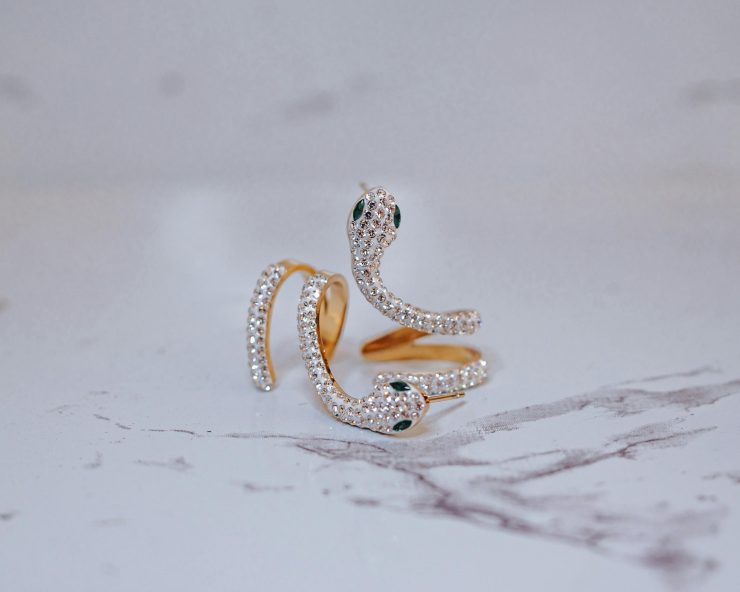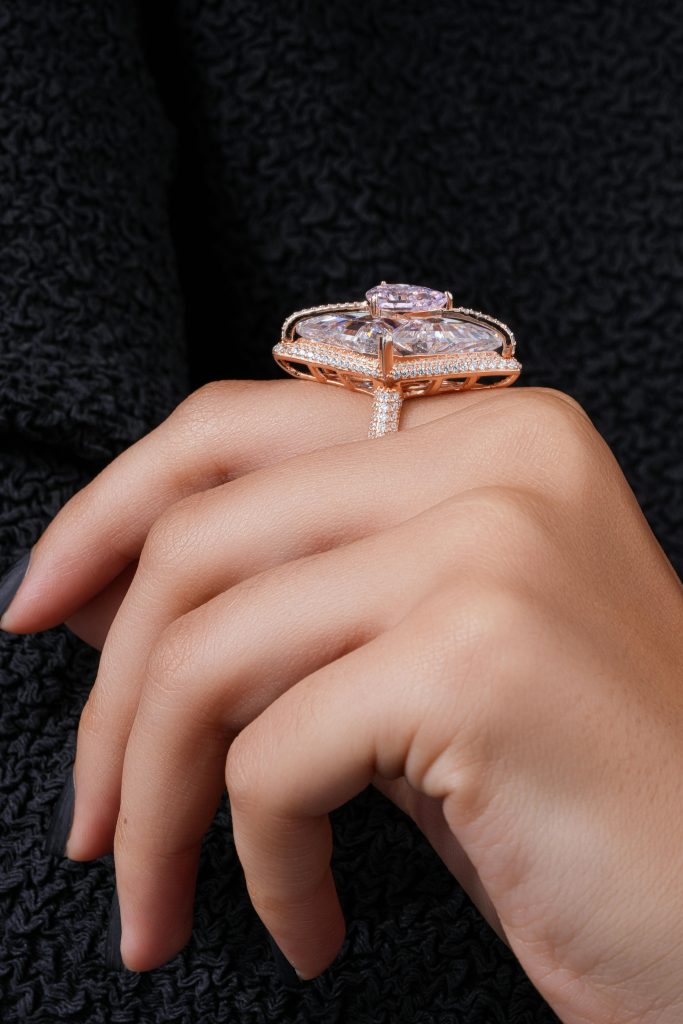Introduction: The Evolution of Diamond Sales in the Digital Age
In recent years, the natural diamond industry has experienced a significant transformation driven by digital innovation and shifting consumer behaviors. Traditionally reliant on brick-and-mortar retail stores, the sale of natural diamonds has moved increasingly online, especially with the growing demand for transparency, personalization, and convenience. Social media platforms, with their unprecedented reach and engagement potential, have become pivotal tools for diamond brands seeking to sell directly to consumers. From Instagram and TikTok to Facebook and Pinterest, these platforms enable jewelers and diamond retailers to bypass traditional intermediaries and connect with audiences on a global scale. This evolution aligns with broader direct-to-consumer (DTC) trends seen across luxury goods, as buyers now expect a tailored, digitally native shopping experience. Leveraging social media effectively requires not only compelling content and storytelling but also a deep understanding of platform algorithms, audience preferences, and e-commerce integration. The following sections delve into specific strategies and best practices that businesses can adopt to drive DTC diamond sales through social media.

Understanding Your Target Audience: The Key to Engagement and Sales
Before launching any social media campaign, it is crucial for diamond retailers to clearly define and understand their target audience. Natural diamonds are high-investment products, and their appeal can vary significantly based on demographic and psychographic factors. For example, younger consumers—particularly Millennials and Gen Z—are becoming increasingly important in the diamond market, often prioritizing ethical sourcing, sustainability, and personalized service. On the other hand, older generations may value traditional aesthetics and investment-grade certifications. Social media offers unique tools such as polls, analytics, and direct messaging to gain insight into consumer preferences, habits, and purchase intent. Retailers should leverage these tools to segment their audiences effectively and tailor their content accordingly. Additionally, understanding cultural and regional preferences—such as the popularity of solitaire rings in the U.S. versus intricate designs in India—can further inform content strategies. Ultimately, the more accurately a brand can define its buyer personas, the better it can craft messages that resonate and convert.
Content Strategy: Storytelling, Visuals, and Brand Messaging
In the context of natural diamonds, content strategy plays a vital role in building trust and generating emotional appeal. Social media thrives on storytelling, and diamonds—often associated with significant life moments—lend themselves particularly well to this format. High-resolution images, short-form videos, carousels, and even user-generated content can be used to illustrate the journey of a diamond, from mine to market. Brands should aim to tell stories about craftsmanship, sourcing, and the human narratives behind each gemstone. Transparency in the diamond’s origin—such as showcasing partnerships with ethical mines or adherence to the Kimberley Process—can also foster trust and align with consumer values. It’s equally important to maintain consistent brand messaging across all content formats. Whether a post is educational, promotional, or testimonial, it should reinforce the brand’s core identity and values. Brands like Tiffany & Co. and Brilliant Earth have succeeded by creating visually cohesive, emotionally resonant content that emphasizes authenticity and heritage, serving as case studies for new entrants.
Platform-Specific Strategies: Tailoring Content to Social Channels
Different social media platforms require distinct approaches, both in terms of content format and audience engagement. Instagram, known for its visual nature, is ideal for showcasing the elegance and detail of natural diamonds through professionally styled images, Reels, and Stories. It also supports in-app shopping and influencer partnerships, making it one of the most powerful tools for DTC jewelry brands. TikTok, on the other hand, favors short, engaging, and often humorous or educational video content. Brands can leverage trends, challenges, and behind-the-scenes videos to humanize their business and connect with a younger demographic. Facebook remains valuable for its extensive targeting options, especially for running paid campaigns aimed at high-income users or promoting events and product launches. Pinterest offers long-term content visibility, and its users often visit the platform with high purchase intent, making it ideal for bridal and engagement ring marketing. YouTube can be employed for more in-depth content, such as gemstone education, customer testimonials, and craftsmanship showcases. By customizing content to fit each platform’s strengths and user behavior, brands can maximize reach and engagement.
Influencer Marketing and Brand Ambassadors
Influencer marketing has become a central component of social media strategy, especially in luxury sectors like fine jewelry. Collaborating with influencers—ranging from mega-influencers with millions of followers to micro-influencers with highly engaged niche audiences—can provide social proof and expand brand visibility. For natural diamond sellers, authenticity and alignment with brand values are more important than follower count alone. Partnering with fashion bloggers, ethical lifestyle influencers, or bridal content creators can place diamonds in aspirational yet relatable contexts. Influencers can showcase products in real-life scenarios such as engagements, weddings, or milestone celebrations, making the brand more relatable and aspirational. Long-term relationships with brand ambassadors can be especially powerful, as they allow for recurring exposure and deeper audience trust. It is also essential to ensure compliance with disclosure regulations by clearly marking sponsored posts, which maintains transparency and protects the brand’s reputation. An effective influencer strategy can humanize a luxury product and convert passive viewers into active buyers.

Leveraging User-Generated Content and Customer Testimonials
User-generated content (UGC) and customer testimonials are powerful tools for building credibility and authenticity in the competitive natural diamond market. Social proof is a critical factor in consumer decision-making, especially when purchasing high-value items online. Encouraging satisfied customers to share photos, videos, or reviews of their diamond purchases—and then featuring this content on the brand’s own social channels—can influence potential buyers and reduce skepticism. Retailers can incentivize content sharing through giveaways, referral programs, or branded hashtags that help aggregate UGC in one place. A potential customer seeing a real engagement story or an unboxing video from another buyer can establish trust faster than traditional advertising. Additionally, incorporating video testimonials or stories in which customers describe their buying journey, why they chose the brand, and how they felt about the final product creates an emotional layer that can resonate more deeply than polished brand content. This approach also emphasizes transparency, allowing prospects to see the brand’s consistency in quality and customer satisfaction.
Paid Advertising and Advanced Targeting Strategies
While organic growth remains valuable, paid social media advertising offers precision targeting capabilities that are particularly beneficial for selling natural diamonds. Platforms like Facebook, Instagram, and Pinterest offer advanced tools that allow advertisers to segment audiences by location, age, income level, relationship status, and even behavioral patterns like recent engagement or shopping interest in luxury goods. For diamond retailers, this means being able to deliver tailored messages to users who are statistically more likely to be in-market for a diamond. Dynamic retargeting—serving ads to people who have visited the website but didn’t convert—is especially effective for luxury purchases, which often involve longer decision cycles. Carousel ads can be used to showcase various diamond cuts or customization options, while video ads can walk viewers through the craftsmanship process or highlight customer stories. It’s important to A/B test creatives, headlines, and calls-to-action to optimize performance. Over time, the use of analytics and pixel tracking can refine audience segments, making campaigns more cost-effective and results-driven.
E-Commerce Integration and Seamless Checkout Experiences
To fully capitalize on social media traffic, natural diamond sellers must ensure a seamless path to purchase by integrating e-commerce capabilities directly into their platforms. Social commerce features like Instagram Shop, Facebook Marketplace, and Pinterest Shopping allow users to explore products, read descriptions, and even complete purchases without leaving the app. For luxury products, this integration should also include access to high-resolution images, 360-degree views, virtual try-on features, and comprehensive information about the stone’s specifications and certification. Customers who are browsing natural diamonds online expect the same level of detail and reassurance that they would receive in-store. Additionally, incorporating chatbots or live customer service representatives on social platforms can address questions in real time, improving conversion rates and customer satisfaction. The fewer friction points there are in the buyer’s journey—from interest to checkout—the more likely it is that a sale will occur. A streamlined mobile experience is especially critical, as most social media browsing and purchases occur on smartphones.
Building Long-Term Brand Equity and Community
Beyond direct sales, social media offers an opportunity to build long-term brand equity and a community around natural diamonds. This involves cultivating not just customers, but advocates who feel emotionally connected to the brand. Posting regularly and with purpose, engaging with comments, celebrating customer milestones, and sharing behind-the-scenes content all contribute to a sense of intimacy and loyalty. Community-driven initiatives such as sustainability campaigns, charity partnerships, or spotlight features on artisans and diamond cutters can further enhance brand perception. Loyalty programs integrated with social platforms can reward repeat customers and promote word-of-mouth referrals. Additionally, brands that are transparent about their sourcing practices, labor ethics, and environmental impact are more likely to gain trust from socially conscious consumers. A strong brand presence on social media also supports search engine optimization (SEO), content marketing, and email capture strategies, all of which feed into a broader digital ecosystem designed to foster loyalty, lifetime value, and consistent brand recognition.
Measuring Success and Adapting Strategies
Data analytics are essential to refining social media strategies for selling natural diamonds. Brands must regularly track performance metrics such as engagement rates, click-through rates (CTR), conversion rates, average order value, customer acquisition cost (CAC), and return on ad spend (ROAS). These insights help identify what content resonates most with the audience, which platforms deliver the highest ROI, and where bottlenecks exist in the customer journey. Social listening tools can also provide qualitative feedback by analyzing sentiment and conversations around the brand or product category. Over time, this data should inform strategy adjustments, such as reallocating budget to high-performing platforms, testing new content formats, or shifting messaging to align with consumer sentiment. In the fast-paced world of social media, agility is key. Staying updated on algorithm changes, trending hashtags, and emerging platforms—such as Threads or BeReal—ensures the brand remains relevant and competitive. Continuous optimization ensures that marketing efforts not only generate immediate sales but also contribute to sustainable business growth.